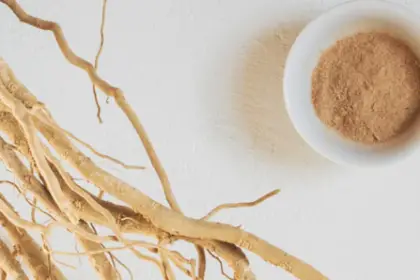Understanding Maltodextrin: What It Is and Why You Might Want to Avoid It
What is Maltodextrin?
Maltodextrin is a common food additive derived from starch, primarily corn, rice, or potato starch. It’s widely used in processed foods as a thickener, preservative, or to improve the texture and shelf life of products. Maltodextrin is a white, powdery substance that is almost tasteless and is often found in a variety of foods, including snacks, baked goods, sauces, and even in some nutritional supplements.
Breaking Down the Term: “Malto” and “Dextrin”
The term “maltodextrin” is composed of two parts: “malto” and “dextrin.”
- Malto: This prefix refers to “maltose,” a type of sugar that is formed during the breakdown of starch. Maltose itself is a disaccharide composed of two glucose molecules.
- Dextrin: Dextrins are a group of low-molecular-weight carbohydrates produced by the hydrolysis of starch. They are intermediate products in the breakdown of starch into glucose.
Together, “maltodextrin” describes a carbohydrate that is partially broken down from starch, containing a mixture of polysaccharides (long chains of glucose molecules) and oligosaccharides (shorter chains). It breaks down in the body into sugar. A sneaky and hidden way to sweeten things without telling you how it’s harming your health.
Maltodextrin in the Body: A Rapidly Digestible Carbohydrate
Once ingested, maltodextrin is quickly broken down into glucose by the digestive system. This rapid digestion leads to a swift increase in blood sugar levels, making maltodextrin a high-glycemic index carbohydrate. Foods with a high glycemic index can cause spikes in blood sugar, followed by rapid declines, which may lead to feelings of hunger shortly after eating and can contribute to weight gain if consumed in excess.
Why Should You Consider Avoiding Maltodextrin?
- High Glycemic Index: As a rapidly digestible carbohydrate, maltodextrin can cause sharp spikes in blood sugar levels. Frequent consumption of high-glycemic foods can lead to insulin resistance, obesity, and an increased risk of developing type 2 diabetes.
- Processed Nature: Maltodextrin is highly processed, often containing genetically modified organisms (GMOs), especially when derived from corn. Many people prefer to avoid GMOs due to health and environmental concerns.
- Digestive Issues: Some individuals may experience digestive discomfort, such as bloating or gas, after consuming products containing maltodextrin.
- Hidden Sugars: Maltodextrin can be hidden in foods as a sugar substitute, leading consumers to unknowingly increase their sugar intake. It provides approximately 4 calories per gram, similar to other carbohydrates, without offering any significant nutritional benefits.
Opting for Stevia: A Natural Alternative
For those looking to reduce their sugar intake and avoid the potential downsides of maltodextrin, stevia is an excellent alternative. Stevia is a natural sweetener derived from the leaves of the Stevia rebaudiana plant. It’s much sweeter than sugar, so only a small amount is needed to achieve the desired sweetness.
Benefits of Stevia:
- Zero Calories: Stevia contains no calories, making it a suitable option for those looking to manage their weight or reduce calorie intake.
- Low Glycemic Index: Unlike maltodextrin, stevia does not raise blood sugar levels, making it a safer choice for people with diabetes or those monitoring their blood sugar.
- Natural Origin: As a plant-based sweetener, stevia is considered a more natural option compared to artificial sweeteners or highly processed carbohydrates like maltodextrin.
Use the discount code: HealthyWildFree to get 10% off your order.
How To Make Your Own Naturally Sweet Sports Drink Or Soda
Step 1: Get a carbonation machine if you want to create your own soda.
Step 2: Get citrus fruits (lime, lemon, orange, grapefruit)
Step 3: Carbonate the water, add a half of a lime, lemon or any other citrus fruit into an 8 ounce glass of water.
Step 4: Add 3 drops of stevia, stir with a spoon.
Sip up and enjoy! The sweet blossom stevia by Omica is exceptional for drinks, the vanilla also. If you add the vanilla stevia with a blueberry powder it creates a delicious drink.
Click here to visit OmicaOrganics.com to try this stevia today. Be sure to use the discount code: HealthyWildFree to save 10% off your order.
Conclusion
While maltodextrin is commonly found in many processed foods, its high glycemic index and lack of nutritional benefits make it less desirable for those looking to maintain a healthy diet. Opting for natural sweeteners like stevia can help reduce sugar intake and avoid the potential negative health effects associated with high-glycemic carbohydrates. Always check food labels and be mindful of hidden sugars in processed foods to make informed dietary choices.





